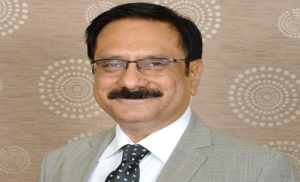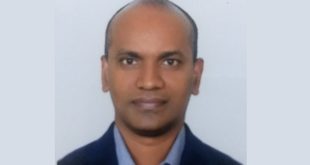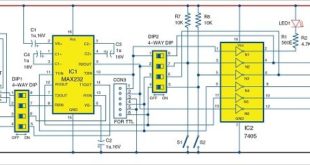Digi2O Information Solutions Private Limited is a Chennai based IOT company serving the smart automotive segment through its Product Designing, Re-engineering & Consulting Services. Mr Dipankar Ghosh, CEO, Digi2O speaks about the challenges in IOT, it’s adoption in India and government’s roles in expanding the IOT market.
Q. Many opine that IoT is just a buzzword that industry Gurus have coined to create hype?Do you agree with that line of thought? Or do you feel that IoT is opening an entirely new market?
 IoT is all about connecting data emanating sources to each other or backend intelligent solutions that help you to control physical systems and provide predictive information for proactive interventions. It also allows us to do research on that data for solving problems that can bring huge benefits to humanity.
IoT is all about connecting data emanating sources to each other or backend intelligent solutions that help you to control physical systems and provide predictive information for proactive interventions. It also allows us to do research on that data for solving problems that can bring huge benefits to humanity.
All objects, from a light bulb to a bearing in a machine to our human bodies, are sources of huge amount of useful data that was not being utilized earlier. IoT has been able to bridge this gap by using the power of communication through the Internet to make available its benefits to the society. Therefore, it is fair to say that it is opening up new markets where problems, both old and new, are going to get solved using this new way of using data from objects.
As an example, in the automotive domain that we work in, as the vehicle goes electric and electronic, there are more and more opportunities opening up to use the data for safety, convenience and comfort for the end users.
Therefore, I am of the opinion that IoT Is well beyond hype today. It is a reality and cannot be ignored by business or governments.
Q. In your opinion, is the Government of India (GoI) playing any significant role in expanding the IoT market right now? If yes, how?
There is a start. For example, the Government of India, through its Digital India campaign, has recognized the importance of IoT for extending the geographical area and improving the quality of government services. To develop and encourage the IoT industry, The Department of Electronics & Information Technology (DeitY), Ministry of Communication and Information Technology, Government of India has come out with a policy document on Internet of Things. The policy document is exhaustive and addresses end-to-end issues / challenges involved in nurturing the nascent new age IoT industry.
To attract private sector participation, GOI has already initiated ‘Smart City’ and a host of other projects to create new markets. We need to build on this start now. In my view, things could move faster. The five-pillar approach is a great idea; however, I don’t see much has been done on the ground as yet.
Q. What are your expectations from the GoI in terms of the initiatives they should take to make India an IoT-super power?
Currently, there is a shortage of human resources in this area throughout the entire IoT solutions creation and deployment chain. As a start-up company we find it difficult to access intellectual capital. There is a huge opportunity for academic institutions to align with companies such as ours to support us on research and product development. It is supposed to be a win-win. However, for some reason, we find this not easy to obtain – perhaps because the industry-academic partnerships have not matured here yet. A GOI thrust in this area could be a game changer.
Another area is finance. Is it possible to have financial support through grants and soft loans focused on companies such as ours which are engaged in developing products for niche areas?
Perhaps some good work is going on in the above areas, but where and how do we get information on the support that is available? So, another aspect is the easy availability of information.
Q. Are you satisfied at the rate of deployment of IoT solutions in India?
I think the rate is OK, though it could be much better, considering the huge potential of using IoT in India.
Companies have moved from the wait and see state to investing state after clearly seeing the benefits. Key is for the company managements to have sufficient knowledge and awareness about the technology and its financial impact for them. This is gradually happening. So, we can expect the rate to pick up greatly in the next 2-4 years.
Q. How do you see the IOT market evolving in the next 2-3 years?
In the next few years we will see more and more deployments across different verticals. Manufacturing, infrastructure, logistics and healthcare, are likely to be the most aggressive movers in the industry side, in my view. I expect retail, education, agriculture and environment to pick up soon as well.
On the consumer front we will see more affordable devices getting into the market which will soon become quite ubiquitous as acceptability increases for convenience, security, safety and comfort.
One important thrust will be on the data front. We are still somewhat in the stage of what to do with the data and how to do it. However, I expect this area to mature and business models around data will get developed.
On the other hand, note that the objective of the GOI IoT Policy is to grow the industry to USD 15 billion by 2020. Such high growth will be possible only if GOI sponsored mega projects, such as Smart City take off in right earnestness within the stipulated time frames. However, going by the current status of GOI projects, achieving the policy target appears to be extremely difficult. High growth of the IoT industry, based primarily on Private Sector initiatives will be muted and much below the GOI target.
Q. Which industry segments do you believe will be driving a larger chunk of demand? Why?
While the GOI infrastructure projects should be driving the demand, I feel industries which may benefit most by IoT solutions will have all or some of the following characteristics:
(a) high levels of technology
(b) rapid technical obsolescence
(c) fast adoption of new technologies
(d) high regulatory oversight of products
(e) complex production cycles
(f) high cost of manufacturing equipment
(g) high working capital requirement
(h) high sensitivity of end-users to product prices
(i) high sensitivity of end-users to product feature differentiation
(j) moderate to high maintenance expenses by end-users.
Based on the above parameters, my research leads me to believe that the manufacturing industry, particularly the automotive industry ticks most of the above industry characteristics and is likely to drive early demand in a big way in India. The benefits of IoT demonstrated in the automotive industry will subsequently generate high levels of demand for IoT solutions in other industries.
Transportation and logistics have also been early adopters and since they support the supply chain for manufacturing, I expect them to drive demand as well. Infrastructure, hopefully, will pick up well with all the initiatives taken towards Smart Cities, Digital India etc.
Healthcare is a big one and much can be gained both commercially as well as for the benefits to the society and I expect the larger players both in the healthcare industry and IoT to work together on this.
Q. What’s your bigger challenge–acquiring customers or acquiring talent? What’s your strategy in resolving the same?
Currently, both are challenges. IoT solutions are very different from traditional products / services. The benefits are not visible to customers with a ‘casual eye’. It is often perceived to be a mere data collection exercise and best avoided as most organisations today suffer from data overload.
Successful use of IoT solutions requires active involvement by senior managements of solutions. It requires identifying data critical to the business (and discarding those that just add to the overload), ideating techniques to capture the data (without loss of completeness and integrity), designing data analysis methodologies and dash boards, putting in place business rules, innovating IoT solution, seamlessly implementing the solution, monitoring data captured and taking corrective actions based on analysis. Therefore, implementation of IoT solutions requires not only the investment of time, but also the high-level skills of change management of the senior management.
For customer acquisition, Digi2O is required to understand problem areas of the targeted customer, suggest solutions, create business cases for the customers, walk the senior management through the solution by demonstrating through POCs and provide low quotes, before an order may be expected to be placed. Depending on the dealing executive of the customer, this may become a challenging exercise as he may not be equipped to appreciate IoT technology and / or visualize the bigger picture of the benefits. Besides, being a relatively new technology, most organizations do not have active budget allocations for IoT solutions. Hence, there are inordinate delays in purchase order placements.
Our strategy, over the last year or so, has been to work patiently with big customers who have sufficient management bandwidth to appreciate IoT solutions, backed with real time issues that require to be fixed urgently. We hope that if Digi2O is successful in demonstrating a solution with such big customers, other customers would gain the confidence to close their order placement cycles quickly.
Acquiring talent has been a major issue. IoT solutions require good knowledge in a host of areas, such as customer business processes / equipment, IoT hardware, IoT firmware, telecommunications, back-end software, statistical analysis, etc. Currently, there is dearth of such manpower resources in the IoT industry. We have, therefore, been constrained to limit our IoT efforts to limited industries and applications where the co-founders have experience and / or for which good resources could be identified. However, with the fast evolution of the IoT industry in India, it is expected the constraints on talent will be resolved soon.
Q. How do you see your IoT-related business growing in the next 2-3 years?
We expect to grow 100 per cent or more year on year in the next few years. They will be entirely in IoT related businesses.
Q. What’s your strategy to create a differentiation for your solutions vis-a-vis your competitors?
We would like to position ourselves as a boutique firm, specializing in limited applications which are relevant to the Automobile Industry. We work with the company management right from identifying areas amenable to maximum benefits from IoT solutions, creating business cases, designing solutions, implementing and hand-holding till steady state.
We would like to differentiate ourselves from our customers in terms of
(1) the quality of involvement with customers
(2) the high expertise of the customer industry of our consultants / affiliates
(3) cost-effective solutions provided
(4) strict compliance with the terms of delivery.
Additionally, we support the automotive industry with IoT solutions that lead to product innovations for them and that which benefit their ultimate customers. This is a clear differentiation as opposed to say providing Industry 4.0 solutions to manufacturing industry.
Q. Any innovative strategy being planned or implemented by your team to create demand for your solutions among customers or channel partners?
We are entering into direct discussions with the CXO level in the automotive industry to showcase our solutions. We believe that at this stage this is the best way to penetrate our targeted market.
Q. Who is the key decision maker for you – the technology decision maker or the business decision maker?
It depends on the customer company. We have dealt with both kinds depending on the company and depending on whether we have received an enquiry, or we initiated the discussion.
If I am the one starting a conversation with a new company, I will generally seek the business decision maker. At the level we speak, we see that there is quite a bit of convergence of interests between the two types, perhaps because of the type of industry we are targeting.
Q. How would you describe your solutions to a non-technical decision maker at the clients’ end?
At Digi2O we believe that all solutions designed should have commercial / economic justification for the customer. Therefore, before any proposal is put up before the customer, the solution is internally evaluated for meeting the techno-commercial aspirations of our customer as initially perceived by us and also for the commercial standards of Digi2O. Before putting up the technical proposal to the customer, we also prepare a business case document for the customer for assisting them in commercial decision making.
When dealing with non-technical decision makers, we describe the solution by emphasizing on the outcomes and the resulting benefits based on the business case document prepared by us. We avoid technical jargons in these meetings. Based on necessity, commercials are discussed.
In the early stages we use examples and stories and also show demos. Showing real-time data from the cloud on mobile phone can generate a lot of excitement since they feel very good about seeing data like that!
This content was originally published here.








